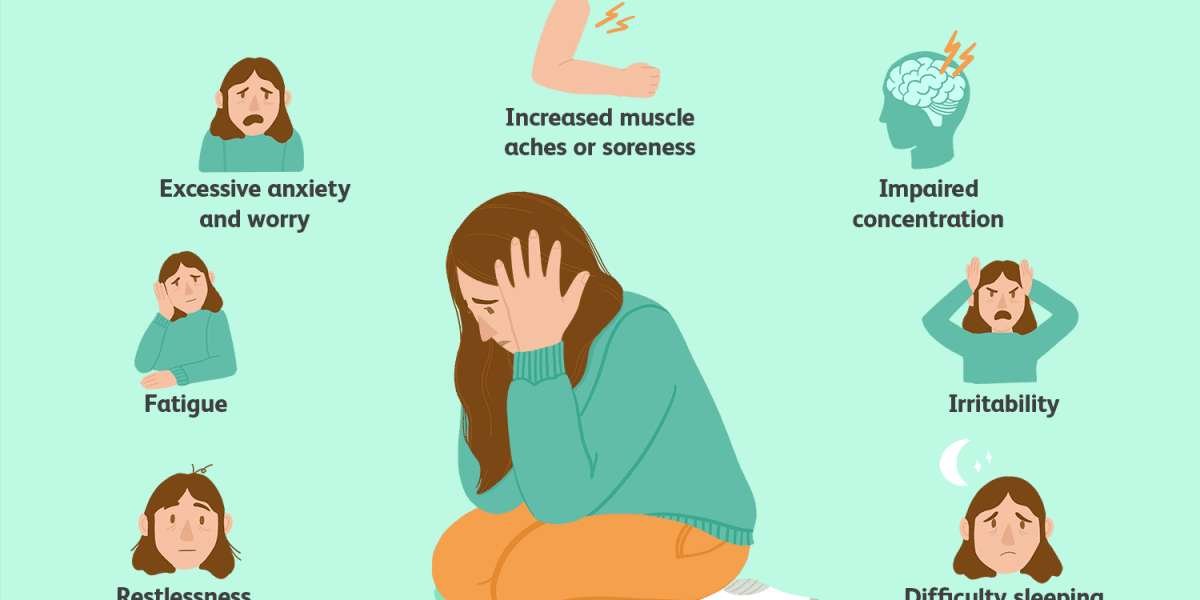Instructions:
Anxiety, frequently described as the gloomy companion of fear, lays its quiet hold on millions of lives worldwide, harming mental, emotional, and physical health. Despite its prevalent nature, anxiety is often misinterpreted, disregarded, or locked away owing to stigma or shame. In this article, we delve into the shadows of fear and explore ways for tackling anxiety's silent grasp, casting light on this prevalent mental health issue to create awareness, support, and recovery.
1. Unveiling Anxiety's Silent Grip:
Anxiety appears in numerous forms, ranging from subtle whispers of anxiety to crushing waves of terror. It silently infiltrates the mind, clouding thoughts with doubt, confusion, and fear. For many individuals, worry becomes a regular companion, lurking in the shadows and influencing decisions, actions, and relationships. Confronting anxiety's quiet grasp demands courage, compassion, and a willingness to cast a light on the darkness within.
2. Understanding the Roots of Anxiety:
Anxiety often arises from a combination of genetic, biochemical, psychological, and environmental variables. Trauma, stress, childhood events, and life transitions can all contribute to the development of anxiety disorders. Additionally, neurotransmitter abnormalities, hormone shifts, and chronic health issues may worsen symptoms of anxiety. By understanding the complicated interplay of these factors, individuals can gain insight into the foundations of their anxiety and begin the journey towards healing.
3. Recognizing the Signs and Symptoms:
Anxiety can show in a plethora of signs and symptoms, both bodily and psychological. Common signs may include racing thoughts, restlessness, irritability, muscle tension, sleep difficulties, and avoidance behaviors. It is vital to recognize these indications and realize when anxiety is harming one's mental and physical health. By tuning into these cues, individuals can take proactive efforts to manage their anxiety and seek support from reliable sources.
4. Breaking the Silence:
One of the most potent methods to tackle anxiety's quiet grasp is to break the silence surrounding mental health issues. By sharing personal experiences, speaking openly about anxiety, and addressing stigma and misconceptions, individuals can create space for discourse, empathy, and understanding. Breaking the silence not only decreases feelings of loneliness and humiliation but also inspires people to seek assistance and therapy for their own experiences with anxiety.
5. Cultivating Self-Compassion:
Confronting anxiety's silent grasp demands a foundation of self-compassion and acceptance. Many individuals with anxiety are excessively self-critical, blaming themselves for their symptoms and berating themselves for perceived faults. Cultivating self-compassion includes treating oneself with love, understanding, and forgiveness, knowing that anxiety is not a character fault but a legitimate health problem that deserves respect and care.
6. Embracing Mindfulness and Resilience:
Mindfulness techniques offer a strong tool for combating anxiety's quiet grip, helping individuals create present-moment awareness, non-judgmental acceptance, and emotional resilience. By combining mindfulness practices such as meditation, deep breathing, and body scanning into daily routines, individuals can learn to monitor their anxious thoughts and feelings without getting overwhelmed by them. This helps people to respond to worry with greater clarity, composure, and compassion.
7. Seeking Professional Support:
Confronting anxiety's silent grasp typically requires professional support from qualified mental health specialists. Therapy, counseling, and medication are among the most effective methods for reducing anxiety and supporting recovery. Cognitive-behavioral therapy (CBT), exposure therapy, and mindfulness-based techniques have been demonstrated to be particularly useful for lowering anxiety symptoms and enhancing general well-being. Seeking treatment from a trained therapist or psychiatrist can offer patients the direction, techniques, and resources they need to overcome anxiety's quiet grip and regain their lives.
Conclusion:
In conclusion, facing anxiety's silent grasp demands courage , compassion, and a willingness to cast a light on the shadows of fear. By understanding the causes of anxiety, recognizing the signs and symptoms, breaking the silence, fostering self-compassion, adopting mindfulness and resilience, and seeking professional treatment, individuals may fight anxiety head-on and reclaim a sense of serenity, purpose, and vitality . In the road towards recovery, may we find strength in vulnerability, connection in community, and hope in the promise of brighter days ahead.

